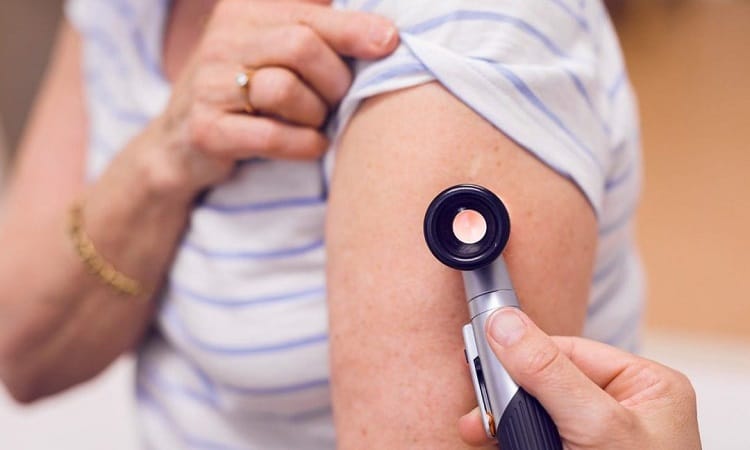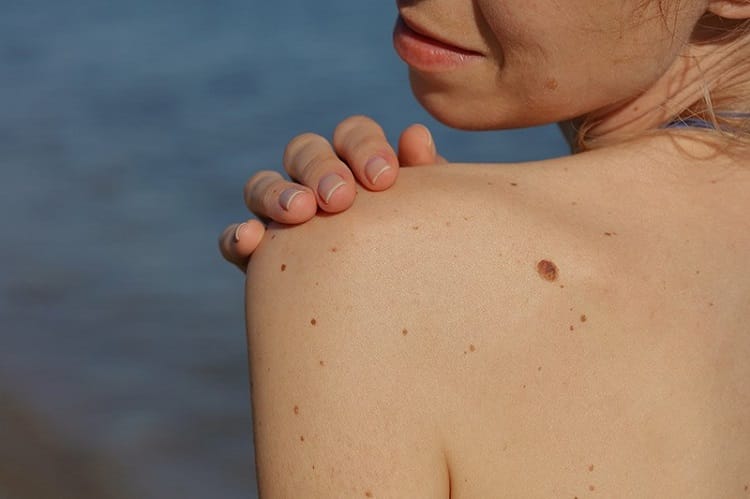Skin cancer is a silent monster. It creeps in and builds its presence during some of our favorite activities such as playing sports, going to the beach, hiking, and even driving (yes, the sunlight and UV rays coming through your car windows can affect your skin). The major issue with skin cancer is it can affect people of all ages, genders, and backgrounds. Many people may not realize that they’ve developed a type of skin cancer until their doctor or dermatologist examines the area. Most people have heard of skin cancer and its effects, but not everyone takes it as seriously as they should. After reviewing the statistics of skin cancer and the treatment options, you may think twice about skipping the SPF or sunbathing too often.
U.S. Skin Cancer Statistics and Facts
According to the Skin Cancer Foundation, over 9,500 Americans are diagnosed with skin cancer every day – that’s about 400 people per hour!
A great majority of these cases are classified as Basal Cell Carcinoma (BCC). BCC and Squamous Cell Carcinoma (SCC), the second most common type of skin cancer, tend to develop on areas repeatedly exposed to UV rays such as on the face, neck, and arms.
Melanoma is a less common but highly dangerous type of skin cancer. Having 5 or more sunburns doubles your risk for melanoma.
Unfortunately, many of these skin cancer cases are not caught in time or are not treated. More than 2 people die of skin cancer in the U.S. every hour.
If skin cancer is caught early, the 5-year survival rate for skin cancer is up to 99%.
To determine if a patient has developed skin cancer, their doctor will often need to have a biopsy performed to test the skin from a specific area. This biopsy tells doctors what type of cancer has developed as well as the stage the cancer is in. Based on the patient’s age, health, condition, and skin cancer results, the doctor may recommend one or more of the various skin cancer treatment options.
Skin Cancer Treatment Options

There are a variety of techniques offered today to treat skin cancer. These can be found on the American Cancer Society website. These treatments include:
- Mohs Surgery
- Radiation Therapy
- Cryotherapy
- Topical Chemotherapy
- Immune Response Modifiers
- Laser Surgery
- Chemical Peels
The most common treatments are Mohs surgery and radiation therapy. Both options are highly successful and have proven results.
Mohs Surgery
In the past, Mohs Surgery was a common treatment for skin cancer. This surgery would often be performed for BCC, SCC, and early stages of melanoma. According to the Skin Cancer Foundation, the cure rate of Mohs for untreated skin cancer is 99%. The cure rate for recurrent skin cancer is 94%.
The Mohs surgery procedure removes layers of the affected skin. The doctor carefully removes each layer and examines them under a microscope. This process is repeated for each layer until all cancerous skin has been removed.
Though this procedure is quite common with a high success rate, there are many risks associated with it. Like most surgical procedures, Mohs is often associated with serious risks like bleeding, infection, and scarring. Depending on how many layers the surgeon has to remove, deeper surgeries can often lead to disfigurement during the healing process. Patients will also have to take time away from work and other activities for recovery. Mohs surgery leaves an open wound that needs significant time to heal.
Radiation Therapy
Radiation therapy is an increasingly popular technique for skin cancer treatment. Radiation therapy is most preferred by patients because it has a similar success rate to Mohs, but each procedure is painless with significantly fewer risks and side effects.
Radiation therapy for skin cancer is often performed with High-dose radiation (HDR) therapy. This type of radiation treatment is highly effective because it is very localized so it spares the healthy tissue around the cancerous skin. The intensity of the radiation therapy results in fewer treatment sessions.
Why Radiation Therapy Might Be A Safer Option for Skin Cancer Patients
Radiation therapy is a significantly safer option for patients with skin cancer in hard-to-reach or sensitive locations, patients with co-morbidities, elderly patients, and patients that don’t qualify for surgery. It is also a preferred option for patients who want to ensure an aesthetically pleasing result.
The 10-year cure rate of radiation treatment for basal and squamous cell carcinomas is 95%. While this is slightly less than the cure rate for Mohs, the results and risks are significantly lower.
Benefits of Radiation Therapy for Skin Cancer Treatment

When considering treatment options for skin cancer, patients should consider the risks and benefits of each technique. When it comes to radiation therapy, the benefits include forgoing the risks associated with other techniques.
For example, radiation therapy treatment sessions are pain-free. HDR therapy cannot be felt, and patients are often pleased with how easy and simple the procedure is.
Radiation therapy is non-invasive. No cuts or incisions are required for any treatments.
HDR therapy is a significantly faster type of radiation therapy that requires only 3-5 treatment sessions.
Radiation therapy has no serious side effects. Following a procedure, patients may see some slight skin irritation that resembles a minor sunburn. This irritation fades quickly and requires no recovery or downtime.
Most importantly, HDR therapy is aesthetically pleasing since it causes no scarring or disfigurement in the skin and deeper tissues. Skin cancer treatment should not be postponed, but it also does not have to be scary or life-changing. Skin cancer radiation centers such as Horizon Medical Services based in Miami, FL have delivered successful HDR treatment to hundreds of patients and continue to improve the results and lives of Americans.

